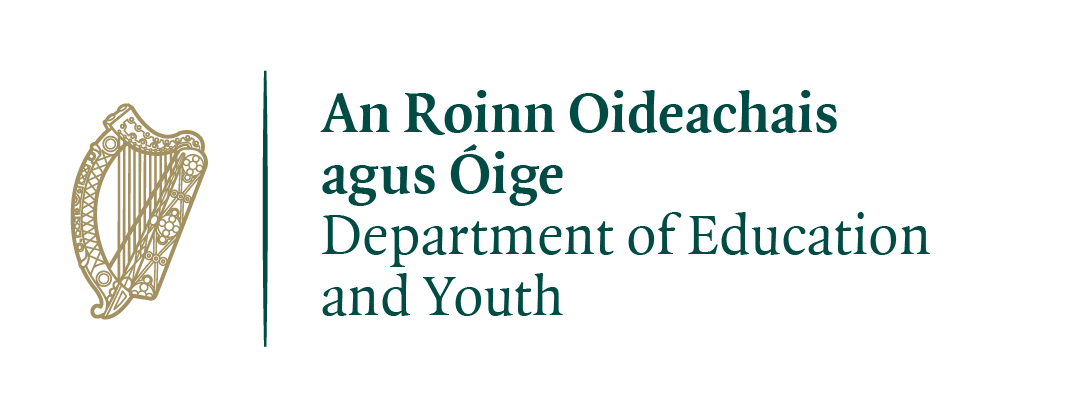9 ways to manage anxiety
It’s perfectly normal to feel anxious from time to time. Here are some practical strategies for helping you to manage your anxiety in the moment.

Anxiety is a feeling of worry, fear or dread. Sometimes it’s linked to a specific event or threat, like an upcoming exam or difficult conversation. Other times, it can feel vague and hard to pin down. However it shows up for you, anxiety can be overwhelming, especially without practical ways to manage it.
In this article, you will find information that covers:
- The difference between everyday anxiety and an anxiety disorder
- Helpful and unhelpful ways of coping with anxiety
- 9 practical strategies for managing anxiety
The difference between everyday anxiety and an anxiety disorder
It is common to feel anxious from time to time, especially when life becomes especially busy or demanding. Whether you’re facing exam pressure, caring for others, worrying about money, dealing with housing insecurity, or trying to keep up with a heavy workload, anxious feelings can build up and feel overwhelming at times. This is a natural response to the demands you are experiencing. Importantly, this doesn’t necessarily mean you have an anxiety disorder.
While anxious feelings are a natural response to fears and difficulties, it is important to seek professional support if these feelings are interfering with your ability to engage in everyday activities. This can include going to work or school, socialising with friends, or engaging in hobbies. Experiencing severe symptoms of anxiety for a long time can be a sign of an anxiety disorder.
Examples of different types of anxiety disorders include:
- Generalised anxiety disorder
- Panic disorder
- Social anxiety disorder
- Phobias
People who are diagnosed with an anxiety disorder can live full, satisfying, and meaningful lives with the appropriate support. The main forms of professional support for anxiety disorders are psychotherapy, such as cognitive behavioural therapy (CBT), medication, or a combination of both.
However, it is important to remember that not everyone who feels anxious has an anxiety disorder. Often, feelings of anxiety go away when the underlying problem or threat has been resolved, such as the completion of exams. In the meantime, there are practical strategies that can help you manage anxious feelings before they become overwhelming.
Helpful and unhelpful ways of coping with anxiety
Research shows that the way we cope with stress and anxiety can make a real difference to how we feel over time. A coping strategy is any pattern of thinking or behaviour you use to manage emotional distress, whether it is triggered by something external, like an argument, or something internal, like a sudden wave of dread.
In general, people who use more helpful coping strategies tend to experience lower levels of anxiety in the long run. That’s why it is worth paying attention to how you respond to anxiety-triggering situations and threats, and finding ways to cope that support your emotional and mental wellbeing.
A good first step is learning to notice when your current coping strategies might be doing more harm than good. Some common but unhelpful ways of coping with anxiety include:
- Avoiding the source of your stress or anxiety
- Constantly distracting yourself instead of addressing the cause
- Ruminating, or going over and over the problem in your mind without finding a way forward
- Blaming yourself or feeling overly responsible for things outside your control
- Catastrophising, or imagining the worst possible outcome and treating it as a certainty
If you recognise any of these in your patterns, try not to judge yourself. Most of us develop these habits because we were never shown another way. What matters is that changing your old ways of coping is possible, and it often starts with self-awareness and self-compassion.
Below, you’ll find nine practical strategies you can try out the next time you’re feeling stressed or anxious. If you’re interested in learning more, check out our article on how to build new coping skills.
9 ways to help manage anxiety
Surround yourself with people or animals
Spending time with people or animals who make you feel safe, seen or supported can ease feelings of anxiety. Research shows that social connection, even small, everyday interactions, can help regulate your nervous system and reduce anxious feelings. There is no one right way to seek support, so it is worth noticing what works best for you.
Some ways you might reach out to others while feeling anxious include:
- Spending time with family
- Texting someone you trust
- Asking for help from the people close to you or accepting when it is offered
- Contacting a helpline
- Speaking with an accredited counsellor, accredited psychotherapist, or a community youth-worker
In addition to reaching out to trusted people, you might find it soothing to spend time with an animal or pet.
Feel and explore your emotions
When you’re feeling anxious, it can be helpful to gently tune in to your emotions rather than pushing them away. This involves allowing yourself to feel the way you do, without judgement. Getting in touch with how you’re feeling can be challenging, especially if you have internalised the message that doing so is a sign of weakness.
You might stop yourself from feeling a difficult emotion fully because you are afraid that if you do so, the emotion will never go away. Remember, all emotions, no matter how unpleasant or frightening they might feel in the moment, are temporary.
Some ways of connecting with your emotions include:
- Going to a quiet place
- Breathing deeply or meditating using a mindfulness app
- Letting out your emotions by crying, laughing, or screaming
- Letting go of the things you cannot control
- Waiting for the emotion to pass without rushing to fix, distract, or numb yourself
- Reassuring yourself in whatever way feels most comforting, whether that is positive self-talk, a calming routine, or a comforting object
Learning to recognise and regulate your emotions takes time, but it’s a powerful part of managing anxiety in the long run. You can read more about this in our article on managing anxiety with emotion regulation techniques.
Create a stable routine
When you are feeling anxious, having a daily routine can bring a sense of stability and structure. It helps create a rhythm to your day, whether that’s getting through school or work, keeping on top of housework or chores, or making time for rest and self-care.
Even small things, like writing a to-do list, can make a difference. Ticking things off the list as you go can bring a sense of relief and confidence, especially when you’re feeling overwhelmed. Just be careful not to overpack your schedule. Finding a balance between getting things done and giving yourself breathing room is key to managing anxiety.
Try to keep your routine flexible
While routines can help you feel grounded, it is important they do not become too rigid. If sticking to your routine starts to feel like a source of stress, or if changing your plans causes intense anxiety, it might be a sign that the routine is reinforcing anxiety rather than helping it.
The most helpful routines are the ones that work for you and can adapt to your needs. That might mean adjusting things when life gets unpredictable, or resting when needed.
Some people worry they might be dealing with obsessive-compulsive symptoms when they experience repeated, intrusive thoughts or feel compelled to do certain actions or rituals to relieve anxiety. It is normal to have negative thoughts from time to time, and sometimes, becoming more aware of these thoughts can actually make us more likely to notice them.
For this reason, having negative or intrusive thoughts does not necessarily mean you have obsessive compulsive disorder (OCD). However, if these intrusive thoughts become very frequent and last for longer than 6 weeks, it might be a good idea to reach out to a qualified mental health professional for support.
Maintain good habits
Maintaining good habits is especially important when you are experiencing anxiety. If you can, aim to balance your responsibilities with activities that support your well-being.
This might include things like:
- Eating healthy food
- Getting sufficient sleep
- Practising an art you enjoy, like singing, playing a musical instrument, drawing, or painting
- Going to places you like, such as the park, a shopping centre, or library
- Moving your body regularly, in whatever way feels good for you
Staying on top of these many different activities can feel overwhelming at times. However, maintaining a manageable routine or schedule can help with maintaining good habits in the long term.
Face your fears
When something is causing you anxiety and it is within your control, it can be helpful to face it head-on. This often involves problem-solving or taking the time to think through the situation and identify what actions might help.
One way to do this is by brainstorming all the possible options or outcomes. You might ask yourself:
- What are all the ways I could respond to this situation?
- What are the pros and cons of each option?
- What’s realistic and manageable for me right now, given the resources and energy I have?
Talking it through with someone you trust can also make the decision feel less overwhelming.
This approach is known as active coping, and it is different from avoidant coping. Active coping involves taking steps to address the root cause of your stress or anxiety, while avoidant coping tends to rely on distraction or withdrawal, strategies that might feel easier in the short term, but often leave anxious feelings lingering or intensifying over time.
Facing your fears isn’t easy, and it’s important to recognise the strength and courage it takes to do so. Whether or not your attempt at problem-solving goes the way you hoped, simply taking action is something to be proud of. Reward yourself for taking steps towards change, however small they may feel.
Breathe deeply
When you’re in a situation that makes you feel anxious, some techniques can help ease some of the physical symptoms, like dizziness, sweaty palms, or a racing heart. One of the simplest and most effective is belly breathing (also called diaphragmatic breathing).
To practise belly breathing:
- Place one hand on your chest and the other on your belly
- As you inhale, try to breathe deeply into your belly, pulling your belly button inwards slightly
- As you exhale, notice your belly and the hand on it gently expanding outward
- Repeat this as many times as you need to help calm your body and reduce overwhelm
This kind of breathing can ground you in the moment and help you feel more in control.
For more breathing exercises to ease stress and anxiety, visit our article on using breathing exercises for anxiety.
Use guided imagery
When stress or anxiety feels overwhelming, imagining a calm, relaxing place can help you feel more grounded. You can try this by using guided imagery from a mindfulness app or simply by picturing a soothing place in your mind on your own.
Choose a place that feels familiar and comforting, maybe somewhere you have been before or somewhere you look forward to visiting. As you bring this place to mind, try to engage all your senses: notice what you might see, hear, smell, taste, or feel if you were there.
This practice can help you face anxiety-provoking situations with more calm and focus, offering a mental break when you need it.
Use progressive muscle relaxation
Another helpful technique for managing anxiety is progressive muscle relaxation. This involves slowly tensing and then relaxing different muscles in your body, starting either from the top of your head or the tips of your toes.
This practice can help you become more aware of how much tension you might be holding and remind you that you have control over releasing it. Learning to relax your muscles when anxiety builds can reduce the physical symptoms of anxiety and help you manage any difficult emotions that might arise.
To try this for yourself, check out our guided progressive muscle relaxation activity.
Practise grounding exercises
When anxiety feels overwhelming and your thoughts start to spiral, grounding exercises can help bring you back to the present moment by focusing your attention on the physical world around you.
The 5-4-3-2-1 technique works by engaging your five senses: sight, smell, hearing, taste, and touch. You can start by taking a couple of deep breaths. Try and breathe slowly and evenly if you can, in through your nose, and out through your mouth.
Look around you and find the following:
- 5 things you can see
- 4 things you can feel
- 3 things you can hear
- 2 things you can smell
- 1 thing you can taste
Finish with a deep breath.
You can read more about the benefits of grounding in this article on grounding techniques.
Feeling overwhelmed and want to talk to someone?
- Get anonymous support 24/7 with our text message support service
- Connect with a trained volunteer who will listen to you, and help you to move forward feeling better
- Whatsapp us now or free-text SPUNOUT to 50808 to begin.
- Find out more about our text message support service
If you are a customer of the 48 or An Post network or cannot get through using the ‘50808’ short code please text HELLO to 086 1800 280 (standard message rates may apply). Some smaller networks do not support short codes like ‘50808’.






